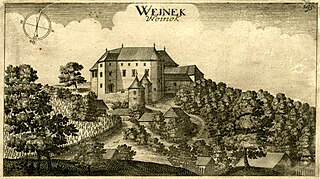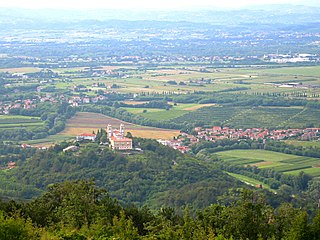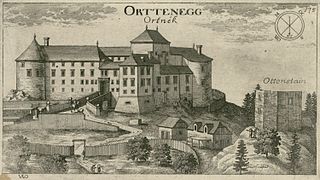
Lower Carniola is a traditional region in Slovenia, the southeastern part of the historical Carniola region. Its largest town and urban center is Novo Mesto.

Inner Carniola is a traditional region of Slovenia, the southwestern part of the larger Carniola region. It comprises the Hrušica karst plateau up to Postojna Gate, bordering the Slovenian Littoral in the west. Its administrative and economic center of the region is Postojna, and other minor centers include Vrhnika, Logatec, Cerknica, Pivka, and Ilirska Bistrica.

The Slovene Littoral, or simply Littoral, is one of the traditional regions of Slovenia. The littoral in its name – for a coastal-adjacent area – recalls the former Austrian Littoral, the Habsburg possessions on the upper Adriatic coast, of which the Slovene Littoral was part. Today, the Littoral is often associated with the Slovenian ethnic territory that, in the first half of the 20th century, found itself in Italy to the west of the Rapallo Border, which separated a quarter of Slovenes from the rest of the nation, and was strongly influenced by Italian fascism.

Kalec is a former village in the Plzeň-North District of the Czech Republic, an administrative part of Žihle. The village was the site of several important events in the history of Bohemia.

Predjama Castle is a Renaissance castle built within a cave mouth in south-central Slovenia, in the historical region of Inner Carniola. It is located in the village of Predjama, approximately 11 kilometres from the town of Postojna and 9 kilometres from Postojna Cave.

Brežice Castle is a 16th-century castle in the town of Brežice, in southeastern Slovenia, at the street address Cesta prvih borcev 1.

Strmol Castle is a castle located at the foot of Dvorjanski hrib near the villages of Češnjevek, Grad and Dvorje, in the Municipality of Cerklje na Gorenjskem, Slovenia. Named after its builders, the Strmol family, it is notable as one of the few castles in Slovenia to retain a Slovene name throughout its history. It is currently a guesthouse and conference site for the government of the Republic of Slovenia.

The Baumkircher Tower, also known as Tabor Castle or Lower Castle, is a defensive tower or small castle located in the town of Vipava in southwestern Slovenia.

Podsmreka Castle is a 16th-century mansion in the settlement of Podsmreka pri Višnji Gori, in the Municipality of Ivančna Gorica, southeastern Slovenia. The manor's name is a compound of the Slovene words pod and smreka, meaning 'beneath [the] spruce'. The Municipality of Ivančna Gorica had sought to have the mansion restored as a motel.

Turjak Castle is a 13th-century castle located above the settlement of Turjak, part of the municipality of Velike Lašče in the Lower Carniola region of Slovenia. The castle is 20 km southeast of Ljubljana and is considered among the most impressive in the area.

Snežnik Castle is a 13th-century castle located in the southwest part of the Lož Valley near the settlement of Kozarišče in the municipality of Loška Dolina, Slovenia. Its name is coincidentally identical to a univerbation based on the Slovene word sneg 'snow', but is actually a Slovenized form of the name of the noble house of Schneberg, whose possession it initially was. The Schnebergs were followed by the houses of Lamberg, Eggenberg, Lichtenberg, and Schönburg-Waldenburg.

Slovenska Bistrica Castle, also known as Bistrica Castle, is a Renaissance-Baroque palace outside the town of Slovenska Bistrica in northeastern Slovenia. Its name derives from the Slovene word bistra 'clear'.

Kravjek Castle is a ruined castle northwest of Muljava, in Lower Carniola, Slovenia.

Miren Castle is an elevation above the settlement of Miren near Nova Gorica, in southwest Slovenia. The origin of the name, which came into usage in the 16th century, remains unexplained. No castle ever stood there. The hill is dominated by a collection of ecclesiastical buildings.

Kostel Castle is a castle above the settlement of Kostel in southeastern Slovenia. It is located on a steep hill above the Kolpa River, not far from the Croatian border.
Bač is a village northeast of Knežak in the Municipality of Ilirska Bistrica in the Inner Carniola region of Slovenia.

Ortnek Castle is a 12th-century castle ruin in the vicinity of the town of Ribnica, Slovenia. The ruin stands on Big Žrnovec Hill, near the village of Hudi Konec.

Ig Castle, also Sonnegg Castle or Zonek Castle, stands on Pungart Hill above the settlement of Ig, on the southern outskirts of Ljubljana, the capital of Slovenia.

Kozjak Castle is a 13th-century castle ruin on a rocky hill above the village of Dolenje Selce near the town of Dobrnič, part of the Municipality of Trebnje in Lower Carniola, Slovenia.

Metlika Castle is a 15th-century castle located above the old part of the town of Metlika in southeastern Slovenia, very near the Croatian border.




















